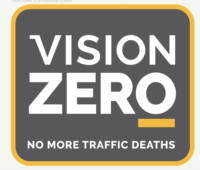
In the same way that revolutions in entrepreneurism, quality and information technology in the 1960s, 1970s and 1990s brought wrenching changes in the modern engineering and construction workplace, there’s a revolution underway in engineering education—and it’s about time.
 |
| Goldberg |
Fast forward to the 21st century, and engineers are increasingly entrepreneurial, increasingly responsible for creating value and finding new markets, and increasingly expected to do large amounts of client-facing work and interdisciplinary teaming.
The need for a broader skill set shows up year after year in surveys of engineering employers who say things like “We appreciate their technical skills, but we wish they had better communications and soft skills.” But the use of the term “soft” betrays a big part of the problem and gestures at the direction the revolution is taking in engineering education.
The revolution is being played out through a partnership between the oddest couple since Oscar and Felix.
 |
| Somerville |
From Fear to Love in 60 Seconds
With its origins in 19th-century military academies, engineering education assumes that fear is the primary motivator of a rigorous education and that “weed-out" courses are necessary to cull the herd.
This approach worked in the 20th century, when many young people used an engineering education to bootstrap into the middle class, assuming the fraternity hazing of an engineering education was a fair price to make a decent living.
Today’s millennial students are unwilling to face such a hostile culture and switch into other disciplines. But here’s the interesting thing: Olin and Illinois discovered that an education based on positive emotions can still be rigorous. Year after year, Olin gets ranked high on lists of the toughest schools—and most fun. How does Olin do this?
Five Pillars of a New Education
Our new book, "A Whole New Engineer: The Coming Revolution in Engineering Education," reviews the Olin and Illinois experiences. Despite vast differences in size, age, governance, location and mission, the two very different schools found that the difference between a challenging education and an environment that only fosters positive emotion rests on five pillars: joy, trust, courage, openness and connection.
Rather than starting from fear and weeding out, Olin and Illinois started from the joy of engineering. Working engineers who stick with it love what they do—and the two programs share that passion from the get-go.
Thereafter, a key to an intrinsically motivating education is trust. If teachers trust students, then students feel this trust and have the courage to take the initiative. Their initiative leads, initially, to failure and reflection, then to success and learning. In this way, students are unleashed to become lifelong, autonomous learners.
This process can be viewed as an equation of emotions: unleashed learning = trust = courage = initiative = failure = reflection = success.
To help change from an operating system of fear to one of joy and trust, the book discusses five technologies of trust: wholeness, intrinsic motivation, coaching, culture and change management.
Join the Revolution
Old-style engineering education shut engineering practitioners and employers out of the education process. This revolution demands a more active engagement between practitioners and educators, both to help drive out the old style and bring in a new, welcoming yet rigorous culture in engineering education.
Where Olin was formed as a “beacon,” the authors have formed the Big Beacon non-profit group as a way to transform engineering education along the lines of our book. More information about these ideas can be found at the websites www.bigbeacon.org and www.wholenewengineer.org. Read them, share them and join the revolution in engineering education.
David E. Goldberg is president of the non-profit Big Beacon and also a noted computer scientist, civil engineer and professor emeritus at the University of Illinois, Urbana-Champaign. He resigned his tenured professorship in 2010 to work full time for the transformation of engineering education. He can be reached at deg@bigbeacon.org.
Mark Somerville is a professor of electrical engineering and physics at Olin College, where he also serves as associate dean for faculty affairs and development. He can be reached at mark.somerville@olin.edu.
Goldberg and Somerville are the co-authors, with Catherine Whitney, of "A Whole New Engineer: The Coming Revolution in Engineering Education," published earlier this year by Three Joy Associates and available in hardcover and all major e-book formats.


Post a comment to this article
Report Abusive Comment